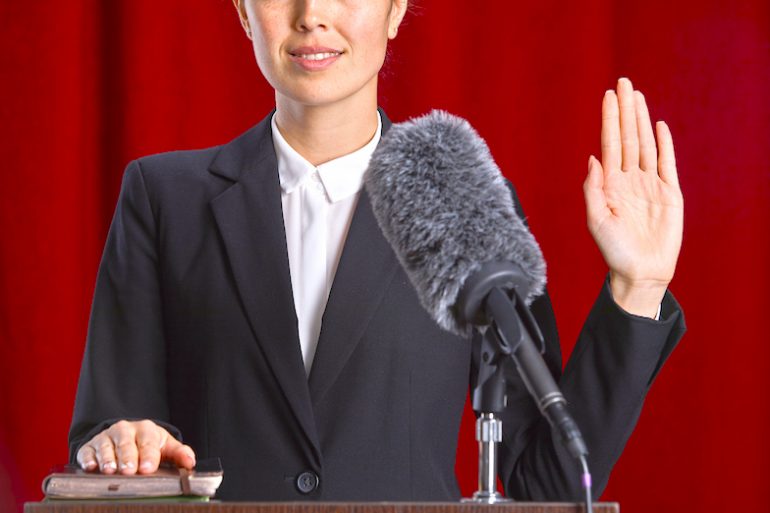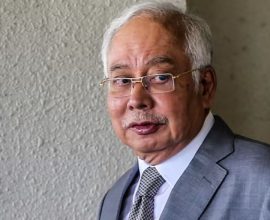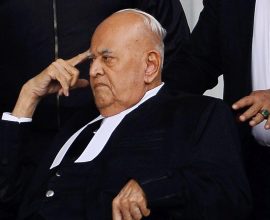How should you cross-examine a witness?
Cross-examination is an art.
There is too little time to explain everything here.
Let us look at some essentials.
[1] Let us set the scene:
John, the plaintiff, is the Defendant’s employee. John is your client.
On 23rd June, 2017, at 8.35 p.m., while John was inspecting a pipeline in the Defendant’s Premises, a tank exploded.
John – your client – has been badly injured.
You wish to show that this disaster could have been easily avoided had the Defendant followed safety precautions. The employer had not.
The Defendant – the employer – says, ‘It is a terrible thing that has occurred’, but he is not at fault.
[2] How to deal with the opposing witness
Put it to the witness in simple words.
In short sentences.
Be polite.
Get on his side.
Bring down his natural inclination to distrust you.
[3] Before we go any further let us look at some Dos’ and Don’ts
[4] Some Dos’
Have a list of ‘Road Map’ for Cross Examination.
[4.1] The Road Map must have milestones that says – ‘to prove A’; ‘to prove B’ etc,
In each Milestone describe what objective you wish to achieve.
Your Chapter on ‘Defendant’s Liability’ may, e.g. note: ‘Show Defendant was responsible for Plaintiff’s injury’. ‘Sole reason was gas explosion’. ‘No other cause’.
[4.2] Each of these milestones must point in the right direction, to victory, to show that the Defendant was wholly responsible.
Keep it tight, and short. Don’t ramble.
A cross-examination question should not exceed 7 to 12 words; mostly 7.
It should mostly produce a ‘Yes’ or a ‘No’ answer – unless you want ‘a designated’ answer [I will demonstrate an example later].
[4.3] Fence your witness in
It is called ‘corralling the witness’.
If you cannot control the witness, you are lost in the wilderness.
[5] Some Don’ts
Never ask an ‘open-ended’ question.
Never ask, ‘So what do you think of the answer given by Mr. Mark Anthony?’
That is an invitation to places you don’t want to go.
[5.1] If you do not know the answer to a question, do not ask it.
‘So how do you think the tank exploded?’ is an invitation to traipse about the woods in total darkness.
Contrast that with: –
‘Don’t you think it was all the Defendant’s fault that the Plaintiff was injured?’ is still dangerously open-ended.
[5.2] Thus learn to ‘draw out the truth’
Don’t try to make him look stupid. He would resist with all his might. Where would that leave you?
Do not hurry. Know when to slow down. (And remember, the judge is writing. Speak only when the judge’s pen stops moving).
Cajole the witness. Lead the witness, one millimetre at a time. Then let him step over the cliff. All by himself.
[6] Look at this example: –
John is the Plaintiff.
You are cross-examining Mr. Smith
Q: ‘The tank exploded on 23rd June, 2017, at 8.35 p.m., didn’t it?’
A: ‘Yes’.
Q: ‘The Defendant-company owned and operated the gas tank?’
A: ‘Yes’.
Q: ‘The Tank was situated in the Defendant’s premises?’
A: ‘Yes.’
Q: ‘At the time the tank exploded, John was working near the tank?’
A: ‘Yes’
Q: ‘John was inspecting the gas pipes was he not?’
A: ‘Yes’
Q: ‘Did John’s duties require him to work near the tank?’
A: ‘Yes’.
Q: ‘All the time?’
A: ‘Yes’.
Q: ‘Was John the only one working near the tank, when it exploded?’
A: ‘Yes’.
Q: ‘You are a qualified petroleum engineer, aren’t you?’
A: ‘Yes’.
Q: ‘Is it not true that too much nitrogen was being pumped into the tank at that time?’
A: ‘Yes’.
Q: ‘Just before the explosion, the tank’s pressure had exceeded the safety limit?’
A: ‘Yes’.
Q: ‘That was the only reason the tank had exploded?’
A: ‘Yes’.
Q: ‘The force of the explosion tore-off John’s foot, didn’t it?’
A: ‘I am not sure’.
[He is dithering. So go over areas which are familiar to him].
Q: ‘John’s injuries are consistent with a gas explosion, aren’t they?’
A: ‘Yes’.
Q: ‘There was no other reason – other than the explosion – for John’s injury, was there?’
A: ‘I am not sure’.
[He is being evasive, even defensive; but you would expect that.]
Q: ‘Five minutes before the explosion, you had given him instructions?’
A: ‘Yes’.
Q: ‘You directed him to close the pressure valves?’
A: ‘Yes’.
Q: ‘Then you hurried off to answer a phone call?’
A: ‘Yes’.
Q: ‘And the phone call was a private one, was it not’
A: ‘Yes. My wife called to tell me about a party we had to attend during the weekend.’
[Do not push him on that subject too much. Skim over. Reserve the ‘unofficial phone call at a crucial moment’ for arguments later on].
Q: ‘After the explosion, you rushed to John?’
A: ‘Yes’.
Q: ‘You were the first to reach him, weren’t you?’
A: ‘Yes’.
Q: ‘Why did you rush to him?’
[This is contrary to the ‘Rule Against Open-ended questions’, but he has limited answers].
A: ‘John appeared to be in a bad way’.
Q: ‘In fact he was lying 30 metres from the tank?’
A: ‘Yes’.
Q: ‘In a mass of blood?’
A: ‘Yes’.
Q: ‘And he was missing a leg?’
A: ‘Yes’.
At this point if you say …
Q: ‘It was all the Defendant-company’s fault, wasn’t it …’
He would fight you to the death.
Or he would say, ‘I disagree’.
A few words of Technical gobbledegook
If you ask him why he ‘disagrees’, he will give you 45 minutes of Engineering gobbledegook.
Do not ever go there. You are not qualified for it.
Unless you have read up reams of technical stuff.
You probably haven’t. So don’t stray there and get your wings clipped.
[So you press on carefully, edging him closer and closer to the cliff until he leaps off it all by himself… But don’t wander too far. Be clipped. Be precise. Be clinical. First things first. Logical.
Q: ‘Was an investigation carried out to determine what had been the cause of the explosion?’
A: ‘Yes’
Q: ‘You were part of that investigating team, were you not?’
A: ‘Yes’
Q: ‘The Investigating Team’s report says that the pressure in the tank was three times above the safety limit, did it not?’
A: ‘Yes’.
Q: And that was the tank that had exploded?’
A: ‘Yes.
Q: ‘Which department is in charge of controlling and maintaining the pressure in the tank?’
[A: He will give you a circuitous answer. Again, technical gobbledegook. He will attempt to show that somehow the company was not at fault. Let him ramble on a bit. Then suddenly cut in.]
[Press on]
Q: ‘I asked which Department was in Charge?’
A: ‘The Engineering Department.’
Q: ‘It was not the department in which John works, was it?’
A: ‘No. John was in the Maintenance Department.’
Q: ‘Was the Engineering Department directly under the Defendant company was it not?’
A: ‘Yes’.
Q: ‘You have consistently told the court over the last 45 minutes that the Engineering Department was in charge, had you not?’
A: ‘I did but …’
[He will assign other ‘causes’. Be careful.]
Now is the right time. Push him over the brink.
Q: And had the Defendant’s Engineering Department done its job …’
[Pause a little … He will blink like a deer caught on a car headlights in a deep forest on a darksome night. He will try to disagree: let him!
‘.. the explosion would not have occurred?’
Q: ‘And had the Defendant Engineering Department taken proper care… ‘[pause .. then continue, in an even –unhurried tone, ]…
Q: Had the Defendant’s Engineering Department ensured the safety of the tank …’
[Then pause.. look at him dead in the eyes,
Swivel your eyes to the judge, to ensure she is paying attention. Turn your gaze back to the witness. Hold it there. Shuffle some papers for about three seconds,
Then pop the question:
‘ … the Defendant would not have lost his leg .. and his livelihood?’
A: ‘I don’t know’.
What – and who – do you think the trial judge will believe?
So, draw out the truth. Lead the witness, one millimetre at a time.
Let the witness do your work for you.
That is the trick!
[7] Some reading:
If you can, read John Hostettler’s ‘Thomas Erskine and Trial by Jury’.
Thomas Erskine was a cross-examiner who could ‘draw ’ what he wanted – out of – any witness.
One judge said he could ‘bewitch’ the trial judge and the bring the witness completely under his ‘spell’.
You can do it too. It requires some practice; and hours and hours of homework.
But it can be done. Why don’t you try it?





